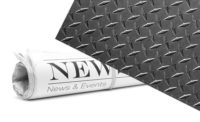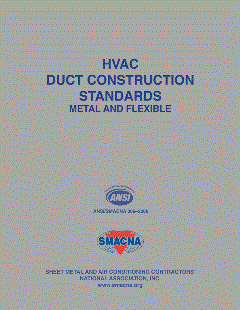Schreiber Foods is constructing a new corporate headquarters and global technology center in downtown Green Bay, Wis. Founded in 1945, it claims to be the world’s largest employee-owned dairy company.
The $50 million headquarters building is 235,000 square feet, reaching five stories of primarily office space. Approximately 550 people will work at the facility.
The firm Hammel, Green and Abrahamson is an integrated architecture, engineering and planning company responsible for the HVAC system design along with other mechanical systems used on the project. Senior mechanical engineer and HGA Vice President Kevin Pope was the main engineer on the project.
A job like this has special considerations, Pope said.
“For most ducting projects of this type, we typically specify a polyimide foam liner for the supply ducting and a fiberglass liner for the return,” he said. “The reason for this is any fibers coming off the fiberglass liner are captured in the air-handling filtration system before it reenters the supply air. It’s also a way to keep cost down since fiberglass is less expensive and offers reasonable sound attenuation.”
Protective
The polyimide foam is usually coated with an acrylic-type polymer when used for duct liner. The coating provides a protective barrier against dust and moisture from collecting in the ductwork. However, one of the drawbacks to the polyimide foam is that it can be more expensive than other materials.
J.F. Ahern Co. is the mechanical contractor for the project and responsible for the sheet metal works and other mechanical systems. Shaun Neubauer, project manager for J.F. Ahern, is responsible for keeping expenses as low as possible.
“It’s part of my job to control project costs so I begin immediately looking for alternative material choices,” Neubauer said. “We noticed immediately that the polyimide foam cost was coming in rather high and we began investigating alternative duct liner material. We had an opportunity to meet with Ductmate Industries to compare their new PolyArmor polyester-based liner material.”
PolyArmor is new to the market, having been out less than two years. It is a polyester duct liner used in forced-air heating, ventilation and air-conditioning systems. It is engineered to provide industry-leading R-values with excellent noise reduction values and superior indoor air quality, according to the manufacturer.
The polyester material is webbed into a thermal blanket which is then bonded with an FSK (foil/scrim/kraft) facing to resist damage during system installation and operation. It also provides excellent durability in the airstream, Ductmate says.
Neubauer said the PolyArmor met the specification requirements and he was nicely surprised with the cost estimate. Since the polyimide was specified, he submitted the PolyArmor specifications to Pope and requested a substitution, which was approved.
J.F. Ahern and Neubauer have a long history working with Ductmate Industries. Quite often they specify other Ductmate products like access doors, connectors and vane systems. Their relationship was a key factor in their decision to install the new PolyArmor liner material, Neubauer said.
Quiet
More emphasis was placed on noise reduction than insulation values, although both were important. The PolyArmor proved excellent for sound attenuation with a 0.65 noise reduction co-efficients rating, while also delivering a R-5 insulation value in 1-inch material thickness.
Duct sizes vary, having dimensions of up to 6 feet by 3 feet and handling airflow of up to 80,000 cubic feet per minute. The specifications called for the PolyArmor installed approximately 20 feet downstream from each variable-air-volume discharge connection.
J.F. Ahern shop manager Chris Elwing said he was impressed with the installation performance of PolyArmor. With more than 31 years working the sheet metal industry — 13 of those with J.F. Ahern — he said he’s seen his share of duct insulation.
“We install all duct liners at the shop and have had to use elastomeric-type product for many of our installation,” Elwing said. “Elastomeric material is tough to work with because it’s hard to cut and shape into place.”
“We had never used the PolyArmor liner before and discovered that it installs much faster and is easy to pin,” he added. “It greatly reduced our man hours on the project.”
Elwing estimated they installed 25,000 square feet of the liner material, all by hand without a coil machine. Even with the additional labor time required, he estimated that he cut his installation time by 30 percent.
The PolyArmor liner is installed to the duct surface using water-based adhesives. This eliminates the need for solvent-based bonding agents that may emit volatile organic compounds for many years after installation. The polyester base material does not promote or support the growth of mold or mildew, making it very desirable for a healthy environment and occupant safety.
The net result was even better than expected.
Officials with companies said they will use the PolyArmor on future projects.
This article and its images were supplied by Ductmate Industries. For reprints of this article, contact Renee Schuett at (248) 786-1661 or email schuettr@bnpmedia.com.












